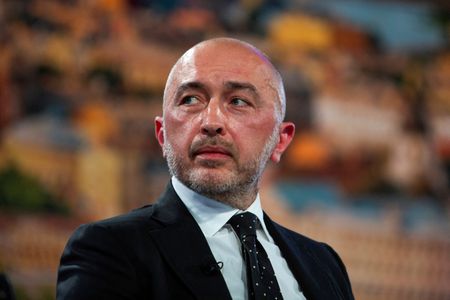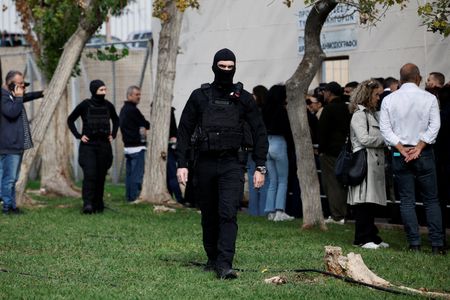By Olena Harmash
KYIV (Reuters) -Ukraine plans to replace its kopek coins to shake off a lingering symbol of Moscow’s former dominance, Central Bank Governor Andriy Pyshnyi said, adding that he hoped the change could be completed this year.
Ukraine introduced its hryvnia currency in 1996, five years after it gained independence from the Soviet Union, minting its own coins but retaining the former Soviet name kopeck – kopikya in Ukrainian. New coins, to be known by the historical Ukrainian term “shah”, would mark the latest shift away from Russia almost four years into Moscow’s full-scale invasion of its neighbour.
“We should finally complete … monetary reform and remove any affinity, any connection with Moscow. Because we have our own (name). And the time has come to finally take it back,” Pyshnyi told Reuters in an interview.
Ukraine’s parliament is preparing to debate the draft law on the replacement of the coin and the central bank is organising public discussions, exhibitions and other events to raise awareness about the proposal, he said.
UKRAINIANS DROP ASSOCIATIONS WITH RUSSIA
The shah, which means “step”, was used as a monetary term in Ukraine in the 16th and 17th centuries. Notes named ‘shah’ were also in circulation during the Ukrainian revolution in 1917-1921, Pyshnyi said, displaying bills from that period.
“It is important to say that the kopeck has been retained in only three of the (15) former republics of the Soviet Union. Russia, Belarus, and Ukraine,” Pyshnyi said. The longtime leader of Belarus is a close ally of Russian President Vladimir Putin.
Russian is a first language for many Ukrainians and the population had a predominantly positive attitude towards Russia in the early 2000s. Some still speak Russian, but the war has prompted many to give up associations with the Russian language and culture, which Moscow says it is fighting to protect.
Hundreds of villages and towns have changed street names, and monuments to Soviet or Russian figures have been dismantled. Memorial plaques to Russian authors, artists or scientists who visited, worked or lived in Ukraine have been removed.
Ukrainians, especially younger ones, are rediscovering national history and identity, reclaiming Ukrainian writers, poets, artists and musicians and other famous figures.
A poll conducted by the Kyiv International Institute of Sociology in September said that about 91% of Ukrainians have a negative attitude towards Russia while 4% view it positively.
Some critics have questioned the timing of the coin move at a time when the wartime budget is already stretched. Pyshnyi said it would involve no extra costs, saying the single coin now in circulation, which would become 50 “shahs” – slightly more than one U.S. cent – would be replaced gradually.
(Reporting by Olena Harmash; editing by Philippa Fletcher)











